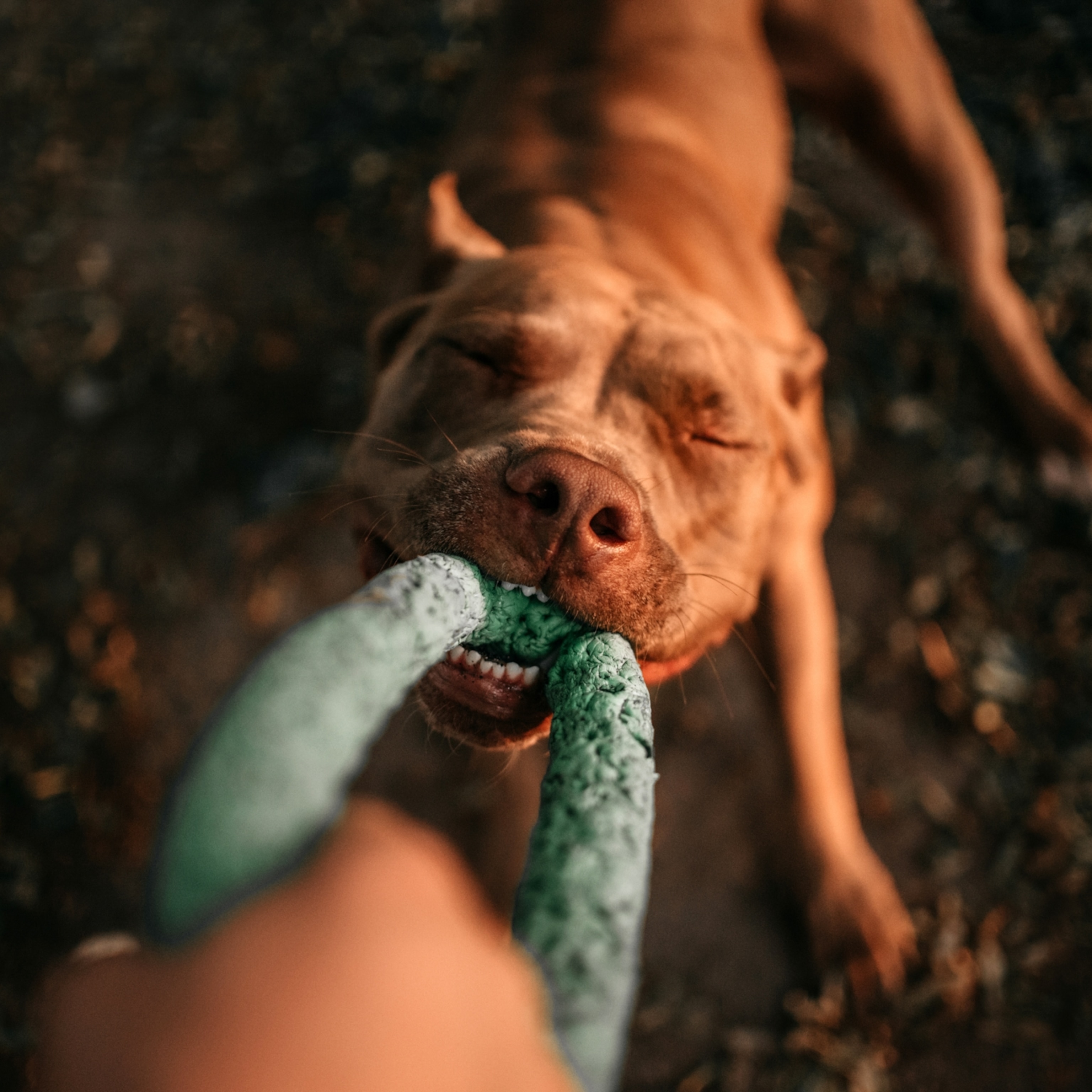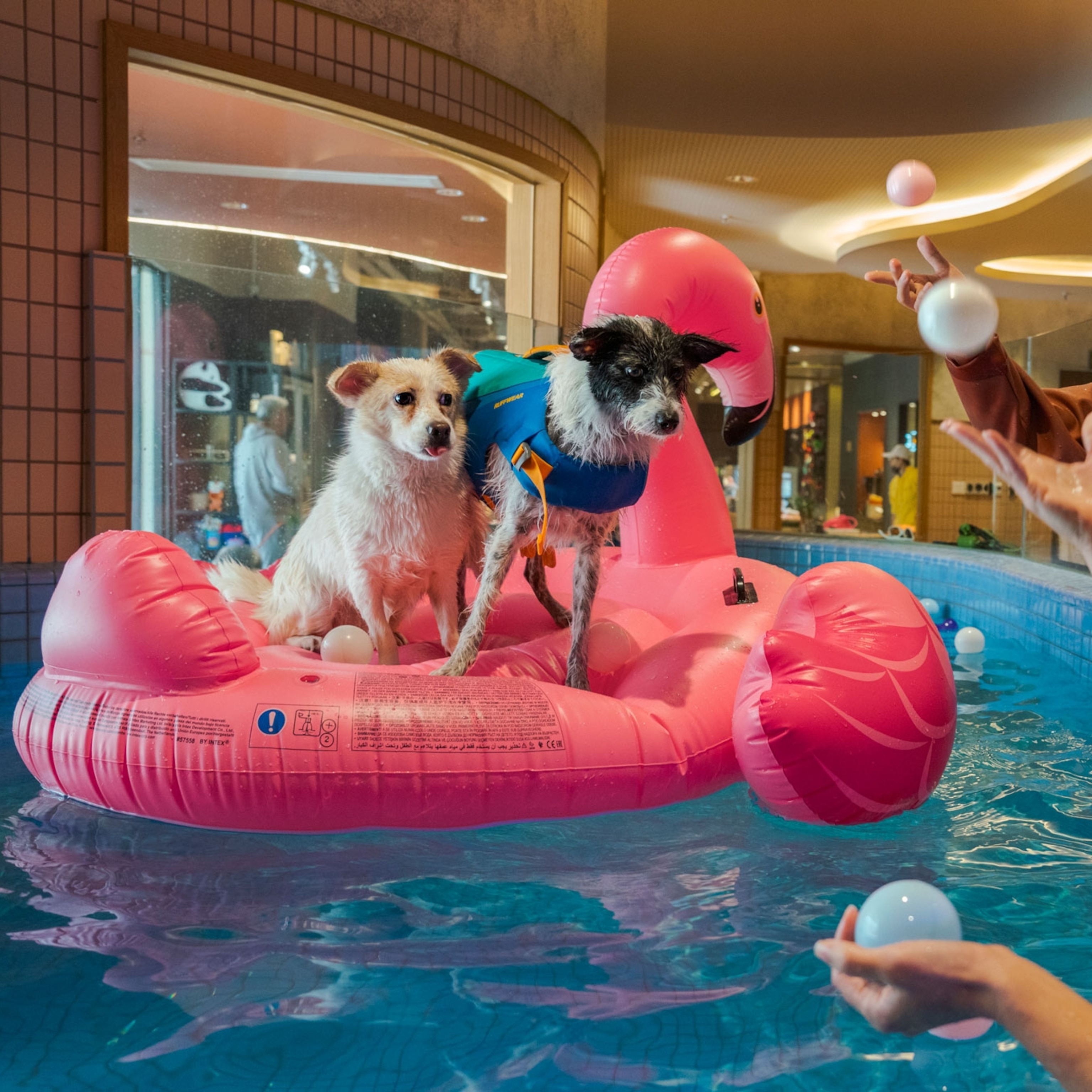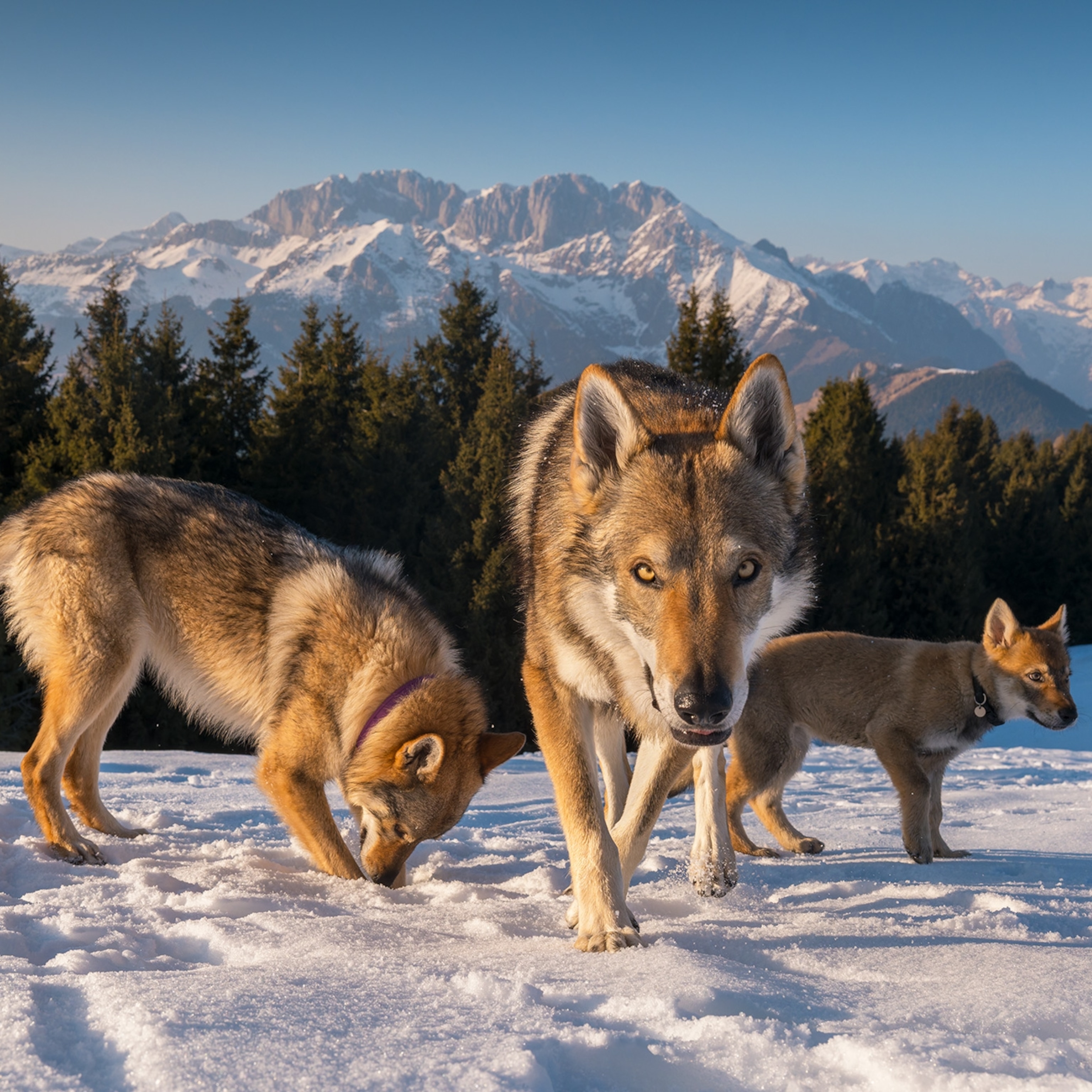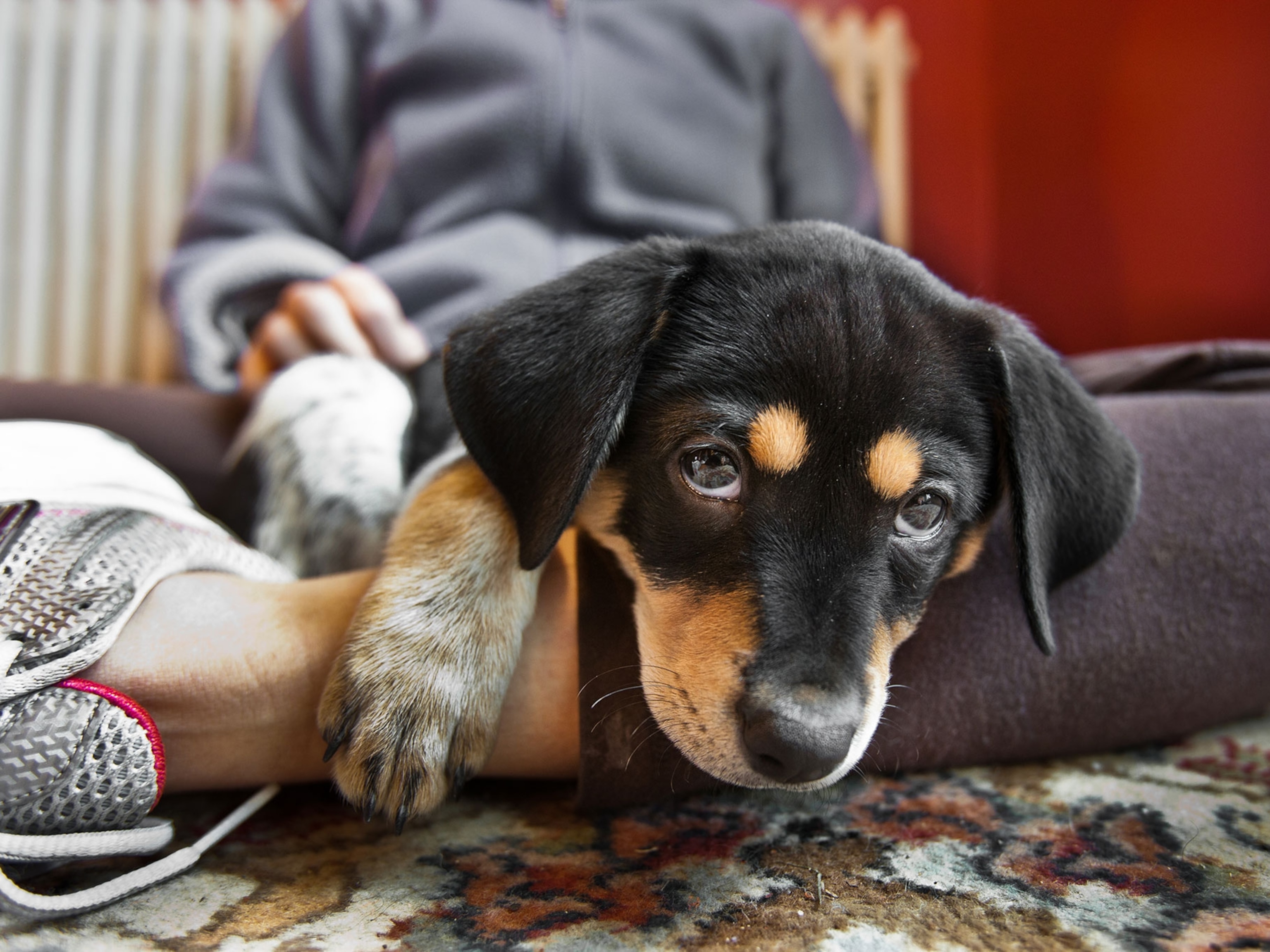
Detection Dogs: Learning to Pass the Sniff Test
It takes work to train and retrain detection dogs to be the best they can be.
Anyone who's been through an airport, crossed national borders, or gone to a public school in the United States has seen detection dogs, noses diligently sniffing for illegal drugs or banned produce and invasive insects.
There are even dogs trained to detect wildlife or wildlife parts, like rhino horns and ivory, that smugglers try to sneak across borders. Just last week, the U.S Fish and Wildlife Service graduated their first class of dogs—four retrievers—trained to sniff out illegal wildlife.
But what happens when one of those drugs, fruits, or animals is taken off the list of contraband? The question has gotten new currency since Washington state and Colorado legalized marijuana through voter-approved referendums last fall.
At least 16 other states, meanwhile, have some form of legalized or decriminalized marijuana, whether for medical or recreational uses. And other states are taking steps toward legalization.
Some police departments in Washington have already announced plans to retrain their canines to stop indicating when they smell the plant. Other states may soon find themselves having to follow suit.
Mary Cablk, a scientist at the Desert Research Institute (DRI) in Reno, Nevada, who studies dog-handler teams, says that dogs can be reeducated so that they don't sit, lie down, or bark when they detect an odor they've been trained to recognize.
But while it's relatively simple to retrain a dog not to alert a handler to the presence of marijuana, legal questions about the searches—as well as concerns about the training and evaluation of detection dogs—make detection canines a more complicated breed.
Sticky Legal Questions
The problem with retraining dogs to stop indicating when they've scented marijuana is that drug loads can be mixed, said Jason Landrum, a training supervisor at the U.S. Customs and Border Protection's (CBP) Canine Center in El Paso, Texas.
"What if it's marijuana and cocaine?" he said. How do you know which substance the dog is alerting on for its handler?
That uncertainty can lead to sticky legal questions, said Larry Myers, an associate professor and veterinarian at Auburn University in Alabama, who provides expert testimony on cases involving detection dogs. "And that's where defense attorneys are going to have a blast in Washington [state]."
Lawyers could argue that even though a dog was retrained to no longer alert on marijuana, there wasn't adequate evidence to confirm that reeducation, he said.
It's also unclear whether every Washington police department intends to retrain their detection dogs. A canine that hasn't been retrained might alert an officer to a substance legal under state law, leading to a search when the police had no cause to detain someone based on that alert.
An Education
Retraining a dog to stop alerting on a particular scent, such as marijuana, is fairly straightforward, Cablk said. If a trainer stops rewarding a dog for alerting a handler to the presence of a particular scent, then the alert behavior can be unlearned.
But even if dogs are trained to stop telling humans about the presence of marijuana, "they're absolutely [still] going to smell it," she said.
"Detection is a physiological phenomenon," Cablk said. "[Dogs are] constantly detecting things," and they don't have control over that any more than we have control over seeing what's in front of us if our eyes are open, she explained.
A strong drive to follow airborne scents is one of the characteristics that the CBP looks for in detection dog candidates, said Landrum.
Once dogs with a strong scent drive are found, the CBP screens them for potential medical issues. If they clear their physicals, Landrum said, the dogs begin their training.
Trainers scent one toy with four target odors, such as marijuana, cocaine, methamphetamines, and heroin, and teach the dogs to find the toy.
The dogs learn to sit when they discover a target odor, and once they have learned a set of smells, they practice finding each odor separately.
The canines also get experience searching in different environments—like open brush, forested areas, or airports—that they're likely to encounter in their seven-year-plus careers, Landrum said.
After six weeks, a dog is paired with the law enforcement officer who will work with it in the field—its handler—and the dog-handler teams then undergo another six weeks of training together.
The dog-handler teams must then pass a certification trial before they can graduate and go into the field.
Customs and Border Protection's Landrum saw firsthand how effective these teams were in apprehending illegal aliens and smuggled narcotics when he was stationed at a checkpoint near Falfurrias, Texas (map), 70 miles (113 kilometers) north of the Rio Grande River.
"That checkpoint consistently led the nation in the amount of seizures it was making," he said.
A ruling last month by the U.S. Supreme Court—which struck down the use of drug detection dogs to gather evidence around a person's home without a warrant—compared the canines and their keen sense of smell to a "specialized device" like high-powered binoculars or heat-detection technology.
Room for Improvement
And yet, even though military and law enforcement agencies around the world have used canines to sniff out drugs and other contraband for decades, scientific evidence has pointed to a range in their reliability and accuracy.
One 2006 study by DRI's Cablk, published in the journal Ecological Applications, looked at dogs trained to detect desert tortoises—listed as a federally threatened species that government agencies, including the Defense Department, wanted to find and protect—and found that their reliability varied between 27 and 73 percent.
A 2011 study published in Animal Cognition by Lisa Lit, a researcher at the University of California, Davis, who studies human-dog interactions, showed that detection dog handlers could be inadvertently cuing their canines to the presence of a target.
It's not the only potential pitfall of high-stakes dog sniffing.
"People use an array of [training] techniques, and depending on who you talk to, their method will be the best method," said Lit. "[But] there is not much data to support one training method over another, and that's kind of the rub."
It's difficult to find dog-handler teams willing to participate in a scientific study because, "unfortunately, the data that we collect can be used against the people we're trying to help," she said.
Blinded Evaluations
Even though many law enforcement agencies require dog-handler teams to keep up with their training and recertification—CBP field teams train for 16 hours every month and must recertify every year—some experts feel the evaluation process needs work.
It's important to have randomized search trials and double-blind conditions, said Auburn University's Myers.
"The handler and dog can't know if anything's present," he said. "And neither should anyone else within eyesight of the dog and handler, so there's no inadvertent cuing."
Most organizations conduct single-blind evaluations, Myers noted, where the handlers don't know the locations of any of the targets, but those conducting the test do.
Even then, those single-blind tests might not be conducted properly, he said. Handlers may be informed before going into a room that there are targets inside—although they won't be told exactly where.
Personalities
The Desert Research Institute's Cablk acknowledges that properly training and evaluating detection dogs and their handlers isn't easy.
There will be well-trained dogs working under challenging conditions or handlers with a variety of skill levels, she said, "[while] some dogs just aren't well trained and couldn't find their way out of a paper bag."
The federal budget sequester triggered earlier this year won't help U.S. government agencies looking to further improve their detection canine programs either, said Myers.
But Cablk says it's important to narrow the range of dog-handler team reliability and accuracy, or team capability, and such work requires scientific study.
"Dogs are not robots—they all come with their own personalities," Cablk said. "The more we learn about how they learn, and the better we humans can be at communicating what we want, the better they'll be."







